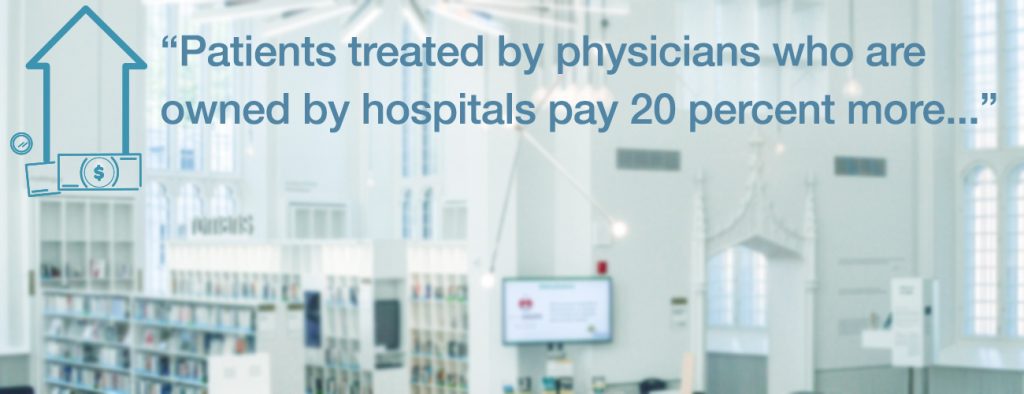Health Care: When Bigger is Not Better

With the holiday shopping season heading down the homestretch, last-minute gift-givers are dashing out to their favorite retailers, hoping to find that perfect present. Their decision to step foot inside a Walmart or Target, Macy’s or Nordstrom, is often based on product pricing. However, many of us would be willing to spend a few extra bucks if we knew that the quality of goods was better from one place to the next.
From clothing to cars, homes to housewares, it makes sense that the cost of a product correlates with the quality. But a recent study from the New York State Health Foundation finds that when it comes to health care, the price you pay from hospital to hospital has very little to do with quality.
Why Are Hospital Prices Different? An Examination of New York Hospital Reimbursement found that hospitals with higher prices are not necessarily higher quality. Similarly, hospitals with lower costs are not necessarily lower quality. Instead, the report found that a “hospital’s market leverage – its bargaining power when negotiating with insurers – is a key factor in the prices a hospital can command.”
The findings are concerning when you consider the cost of care at these facilities. A 2015 Health Affairs study found that some hospitals charge their customers a 1,000 percent markup on products and services.

Most patients don’t pay – and may never know – the full price of these services, or what hospitals are charging. Health insurers, acting as advocates for consumers, negotiate discounts, and oftentimes, pick up most of the tab. But don’t fool yourself into thinking that these rates aren’t baked into the cost of your insurance premium. Today, 33 cents of every premium dollar goes directly to hospitals, while your insurance company gets a modest 8 to 10 cents to cover its administrative expenses.
You might ask yourself – why are hospitals allowed to get away with these price-setting practices? The short answer is that no one is stopping them!
Ironically, the Affordable Care Act – which touted integration and continuity of care – unleashed a wave of hospital consolidations that led to higher costs. Sadly, some very talented, independent doctors were sucked into the storm, lured by the promise of a larger system that could afford to adapt to increased regulations and technological upgrades.

The problem, according to a 2014 study by the Journal of American Medical Association, is that patients treated by physicians who are employed by hospitals pay 20 percent more than those who are treated by independent doctors. What’s more concerning, according to the findings, is that higher prices are the direct result of “greater hospital pricing leverage against health insurers.”

Recent media coverage of contract talks between hospitals and health insurers has caused concern among patients, many of whom worry about whether their doctors will remain in network. While these talks are a normal part of the business, they’ve gotten more contentious in recent years as insurers – like CDPHP – have been forced to put their foot down. If hospitals are allowed to leverage their massive buying power to jack up rates, insurers will have no choice but to increase premiums.
State and federal lawmakers are often quick to regulate the insurance industry, but have turned a blind eye toward hospital costs. As we head into the new year, and with a new presidential administration at the helm, one can only hope that health care policy does what’s right for patients, consumers, and our community.
 The Daily Dose
The Daily Dose
 John D. Bennett, MD, FACC, FACP
John D. Bennett, MD, FACC, FACP
Comments are closed.